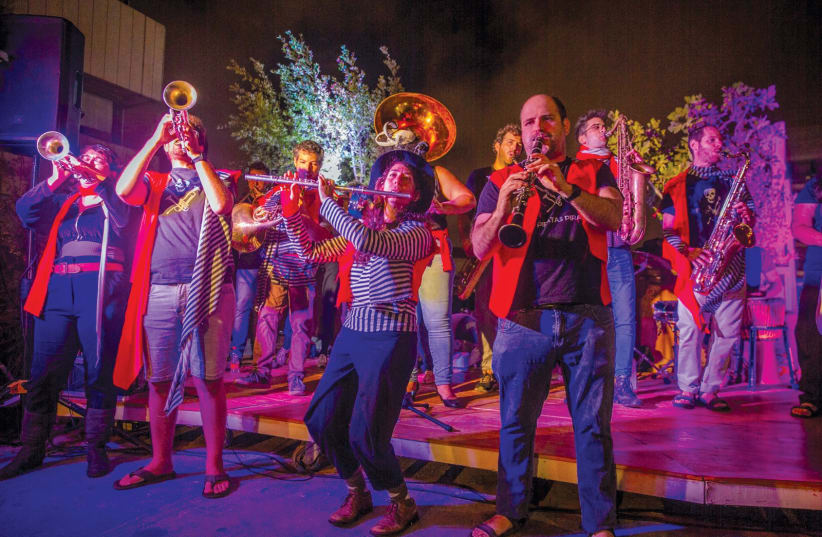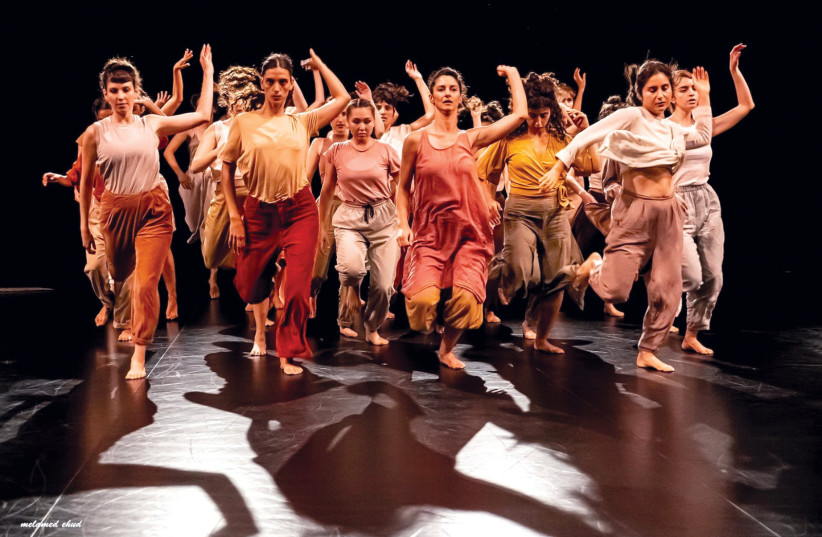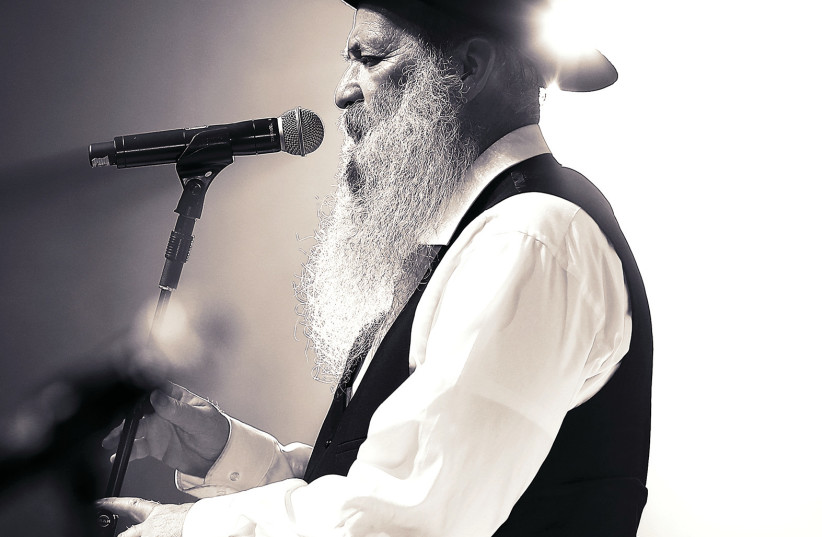Ronen Yitzhaki has grandiose plans. Then again, he is not looking to slip into extravaganza mode; far from it.
Yitzhaki is currently serving as joint artistic director, along with Ruth Diskin, of the Sidratarbut series, which kicked off earlier this month in Jerusalem and continues until September 29.
The program, the initiative of the Mandel Foundation and the Jerusalem Foundation, takes in a broad range of free cultural events of various scales and stripes. All the shows, performances, workshops and lectures take place in neighborhoods across the city.
“It is not about artists, say, from east Jerusalem going to perform on a stage at the Jerusalem Theater. Perhaps that is something that would be too alien to them,” observes Yitzhaki. “They perform in their own backyard, so to speak, in a place in which they feel comfortable.”
That is very much the spirit that runs through the entire Sidratarbut enterprise.
An Israeli street-level culture venture
This is a fundamentally street-level venture that relates to “culture” – tarbut in Hebrew – in the wider sense of the word.
“Culture is not just art, theater and such,” Yitzhaki sagely notes. “It is about life and how we live.”
That, in a nutshell, is what Sidratarbut is about. Now in its second year, the project mines the multifarious rich seams of culture, arts across numerous disciplines, schools of thought, religious leanings and ethnic aspects that abound in Jerusalem, and tailors that to the diverse consumer hinterland in question.
WE MEET at the plush Mandel Foundation building near the Jerusalem Botanical Gardens, where Yitzhaki is a frequent visitor and regular collaborator.
For an organization that sets out to nurture leadership skills and to support activities in the country across a wide range of fields, the geographic interface makes for a snug philosophical fit.
“This is not a purely academic organization,” the artistic director remarks, referencing the Mandel Leadership Institute. “The idea is to impact on the field and connect with the field.”
That idea, he feels, is reflected in the series programming, which, during the course of the close to two-month cultural agenda, offers events in 34 neighborhoods around the city. “Sidratarbut is, in effect, about venturing out into the field. It is, in basic terms, about getting down and dirty with the man, woman, boy and girl on the Jerusalem street, irrespective of their personal – religious, ethnic, cultural – backdrop or age group.”
That is reflected right across the series roster. On Sunday, for example, residents of all ages living in the vicinity of the Neveh Ya’acov Community Administration Center can pop along there at 5 p.m. to catch artist Aharon Zev Bernstein do his inspired thing by forging a work of art right there, before their eyes.
The all-the-family Brush in Sand show has Bernstein, who, we are told, performs for audiences across the globe, creating a picture from grains of sand he casts every which way. He relates some of the experiences he has had and the sights he has witnessed on his travels, winding up his act by inviting the members of the audience to get in on the artistic act.
Then, a couple of days later at the community administration building in Kiryat Hayovel, locals can turn up the energy level a couple of notches at a concert by effervescent street brass outfit Las Piratas Piratas.
The troupe specializes in New Orleans-style sounds and rhythms, as well as dipping into Balkan music, Latin and African songs, rock and pop, klezmer and Oriental music, with a bunch of original charts thrown in the mix for good measure. The band’s credo cites feeding off the Jerusalem street vibe, which suits the Sidratarbut viewpoint like a glove.
“The idea was to bring culture into people’s homes. In the sense of bringing it close to their homes, in their neighborhoods, rather than just working with the recognized cultural facilities, like putting on a gala show at the Jerusalem Theater or the Israel Museum.”
Ronen Yitzhaki
“The idea was to bring culture into people’s homes,” says Yitzhaki, “in the sense of bringing it close to their homes, in their neighborhoods, rather than just working with the recognized cultural facilities, like putting on a gala show at the Jerusalem Theater or the Israel Museum.”
Clearly, that is not what Sidratarbut is about. It is also about making culture and the arts as accessible as possible, on various levels. “We wanted to operate in public spaces, with mainstream material. We don’t want to put out things that are too challenging or weird. We also wanted to work with all the community administration bodies. It is very important to us to be in touch with every community administration that is interested in [cultural] content.”
MAKING CULTURAL content available to locals also relates to the financial consideration.
“We want to provide content free of charge,” Yitzhaki continues. “They can have a concert with an orchestra with 20 players, who come to the community center or perform outside in the street, under the aegis of the Mandel Foundation.”
Sounds like a good, heart-warming, spiritually enriching, enjoyable deal, and Yitzhaki, Diskin and the rest of the Sidratarbut gang are keen to spread the joy factor. “We operate in all the niches that exist in Jerusalem, from, say, the haredi public in Neveh Ya’acov to the Palestinian population in the east part of the city.”
While Sidratarbut is, principally, about proffering quality artistic fare to all and sundry in Jerusalem, Yitzhaki is naturally keenly aware of the knock-on effects such efforts can spawn.
“I and my colleagues here want to be in touch with everyone,” he states.
That accounts for a diverse and even disparate cross section of people and political and other stances.
“We want to connect with people whose values are different than ours, people who have different opinions to ours, those who dress strangely and may have all sorts of ‘accessories’ on their faces. Haredim also dress in a strange way,” he adds. “There is this title – multiculturalism – but, at the end of the day, when you say multiculturalism that entails sitting down and talking to people whose culture is different from your own.”
Perhaps, I venture, we may not be so different. After all, if we sit down to watch a show together, it follows that there is some kind of common denominator between us.
Yitzhaki goes along with that idea but tempers the consensus element by pointing out that even if we do share the same entertainment experience, there may be some residual considerations that leave a lot to be desired.
“What would you say if you sit down with religious Jews and the women have to sit at the back?” he posits. He had me there. “Some people may say they don’t want to support that sort of thing, which, to my mind, is legitimate. But we don’t want to go along with that line of thinking. That value harms us; we don’t agree with it. But we still want to be in contact with them.”
SIDRATARBUT IS basically about making cultural endeavor readily available to Jerusalemites of all stripes, while neatly sidestepping potential minefields.
“I don’t want to air ideas that are too lofty because that can scare people,” Yitzhaki suggests. He says it is more about quality of life and the nuts and bolts thereof. “If, for example, you go to speak to members of a minority group, and you say you have come in order to make peace, they won’t want to talk to you. They’ll say, ‘Who are you? What are you?’ That’s too intrusive.”
As such, Yitzhaki prefers to apply a light hand to the artistic direction tiller, gently guiding projects and providing the wherewithal to allow things to happen rather than laying down the artistic law.
And, with such a varied spread of events going on between now and the end of next month, it seems to be working out nicely.
Some of the interesting exhibits in Jerusalem
One of the more intriguing spots is due to take place over at the Art Shelter Gallery, in the haredi neighborhood of Mekor Baruch, which serves as an exhibition facility for contemporary Jewish art.
On September 11 (7 p.m.), the venue will host Sprayback 2. The undertaking has its roots in the Grafidos venture, the first haredi graffiti creation born in 2018 with the support of the Jerusalem Foundation, Mifal Hapayis and the Jerusalem Municipality. Grafidos produced a 12-meter-high wall painting, which adds much color and interest to the spirit of the neighborhood.
The performance moniker feeds off the principal Grafidos painting tool and an interactive art form called playback theater based on personal stories.
The September 11 gig, curated by Noa Leah Cohen, will feature a cast of playback actors from the Nekuda Tova theater company, which, it says, sets out “to introduce the haredi and religious world to quality theater which touches, and is connected with, the world of Judaism and faith, and act as a bridge to the secular public in enabling it to be exposed to content from Jewish heritage.”
Sprayback 2 follows the accommodating ethos of the Art Shelter Gallery, which was thought up in 2003 by such celebrated hozrim b’teshuva – secular Jews who turned to religion – as former filmmaker Uri Zohar, well-known painter Ika Yisraeli and singer-actor Mordechai “Pupik” Arnon.
The definitively inclusive theatrical show sees the hozrim b’teshuva performers expound, through theatrical means, the dynamics behind their decision to radically change their course through life, looking into their motives, deliberations and the ups and downs of the process. As a fundamentally two-way street vehicle, the members of the Nekuda Tova cast will also get members of the audience actively on board.
People who attend playback theater shows generally hear some unusual life stories but come away with the feeling that, perhaps, the experiences they heard about are not so rare, and that we probably all have more common ground than divisive sticking points.
While it may not entirely address the matter of gender segregation and the exclusion of women from various goings-on in the haredi sector, having women-only cultural events, at the very least, offers women opportunities to enjoy the arts.
Ki Mehakim Anahnu (We Are Waiting), which takes place at the Neveh Ya’acov Community Administration Center on August 30 (8 p.m.), examines various aspects of a woman’s life, such as nurturing relationships, parenthood and self-realization. The series blurb says the musical, theatrical show sets out “to empower and move the spectators.”
THERE ARE quite a few musical slots across the Sidratarbut season, with the Mitzad Letzad (From Side to Side) family show at French Hill on September 6 (5:30 p.m.); Sliha, by the Ye’arot Ensemble and Yael Gidoni, at Beit Hagat in Ein Kerem on September 1 (8:30 p.m.); and a multidisciplinary show called Ma At Keshura? (What Does This Have to Do with You?) at Uri Zvi Greenberg House on Jaffa Road on September 7 (6 p.m.), with Beit Hagat also hosting the Gai Ben Hinom Choir and Ruth Hoff and their Tashlich program on September 8 (8:30 p.m.).
The aforementioned playback theater listening ethos informs the Yitzhaki-Diskin mindset and, thus, the Sidratarbut programming throughout.
Perhaps that philosophy is more powerfully manifested in the series closer. On September 28 (8 p.m.), an audience of men, women – religious, traditional and secular alike – is expected to gather for the Slihot Nusah Tahrir event at the Tower of David Museum for what is designed to be a moving musical and spiritual experience for one and all.
The show includes renditions of a wide repertoire of traditional liturgical material, from Ashkenazi and Sephardi communities.
Those who want to gain a deeper understanding of the backdrop to the fare can also take part in preliminary study workshops courtesy of the “Yeshiva Mizrahit” school of “philosophy, art and liturgy in the spirit of Judaism from Islamic countries.” The sessions will offer participants a better understanding of the custom of reciting Slihot, penitential prayers and poems, particularly at this juncture of the Jewish calendar.
The Sidratarbut subtitle says it all – art and creative events from and for Jerusalem. ❖
All events are free but require prior registration on the Sidratarbut website: https://sidratarbut.art/en














